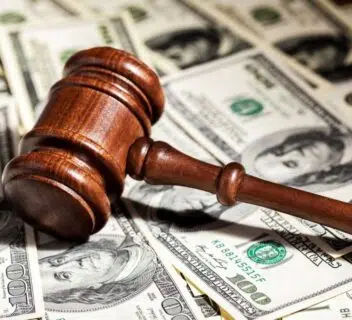What is a Hit and Run?
If you’ve been involved in a car accident where the driver who collided with you flees the scene, then chances are you’re considering a lawsuit, and you may even be wondering the basic question: “What is a hit and run?” After all, you may be entitled to compensation to cover the losses you sustained as a result of the accident — but navigating a hit-and-run accident dispute isn’t always straightforward.
So, what is a hit-and-run? Let’s take a look at some basic issues in hit-and-run cases, including definitional aspects. Read on to learn more!
What makes something a hit-and-run?
Every state has different implementations of law — including hit and run law — but as a general rule, a hit and run occurs when a driver flees the scene after being involved in an accident where they have caused property damage, injury, or death. Drivers are required to provide their driver’s license information at the scene of an accident. Drivers have a legal responsibility to stop, identify who they are, and render aid to the injured person, to the degree that doing so does not endanger themselves. Failure to do so could have legal ramifications.
It’s worth noting that there are exceptions to this legal requirement. For example, drivers may not have to stop if there is an immediate danger in stopping — if a crowd has formed and is looking to take violent retribution against the colliding driver. The driver may also not have a safe place to stop nearby and set up their parked car, if there is a weather or road-related issue, such as a flood, or a downed power line. The law requires that they stop nearby (to the degree possible without endangering themselves) and manage the situation. This may involve things like speaking to a police officer or calling law enforcement themselves, if necessary.
Is it possible to hit a car and not know it?
Yes — though it is uncommon. Generally speaking, any significant collision will be felt and known by the colliding driver, so long as they are not sleep-deprived, heavily distracted, or intoxicated, each of which could result in liability independently.
If a driver hits you and drives away, and later — when you sue them — claims that they didn’t know that they hit you, then you could argue that they shouldn’t be driving if they can’t tell that they hit another driver. It may be a reasonable enough argument to support your negligence claims.
That being said, in a minor enough accident (paint scratching, scuff marks) where a colliding driver may genuinely not realize they made contact with your car, the damages are unlikely to be significant enough to warrant a lawsuit in the first place.
Challenges in a hit-and-run lawsuit: what does it mean to be a victim of a hit and run driver?
Hit-and-run disputes come with a few unique challenges. They are as follows:
- Identifying the hit-and-run driver.
- Securing an adequate payout after identifying the hit-and-run driver.
Once a hit and run driver has fled the scene of an accident, it can be challenging to identify them so that you can sue them for damages. That being said, with the aid of an attorney, you’ll be able to investigate the accident scene and potentially piece together the identity of the driver who collided with you — for example, your attorney might work with local business owners to get security video footage of the accident, which might reveal the license plate number of the defendant’s car. Your attorney might also speak to eyewitnesses whose testimony could help piece together the identity of the driver.
This evidentiary issue is core to hit-and-run accidents. Overcoming this issue is a key aspect of succeeding in your hit-and-run lawsuit.
Unique opportunities in a hit-and-run lawsuit
Hit-and-run lawsuits have a few unique and powerful advantages — if you’re able to identify the defendant-driver, then you’ll have a much easier time 1) establishing liability, and 2) navigating the dispute within the court litigation process, as the court will almost certainly favor you over the fleeing driver who was attempting to escape their legal responsibilities.
Though fleeing the scene of an accident is not “proof” of liability, it’s a strong indicator that hit-and-run drivers thought they did something wrong and were attempting to avoid taking responsibility for it. For example, oftentimes, a fleeing driver does not have an active driver’s license, or is intoxicated — they understand that these are illegal, and flee the scene to avoid being “found out.” Even if the defendant fled for some other reason (perhaps they’re just an anxious person), they will be fighting an uphill battle should you identify them and subsequently sue them for damages.
Other defendants to sue after a hit-and-run accident
Whether or not you can identify the driver who collided with you (in a hit-and-run accident), you’ll want to explore the possibility of suing other defendants who are partially liable for your injuries. In some cases, you may also need to contact your insurance company to discuss coverage and claims related to the hit-and-run accident. Defendants in a motor vehicle accident lawsuit may include, but are not limited to:
- The defendant-driver who fled the scene
- Other drivers who contributed to the accident
- Any auto manufacturer whose defective designs or defective production issues that contributed to the accident
- The City, if their improper maintenance or roadway designs contributed to the accident
- Any property owner for which a dangerous condition of their property contributed to the accident
- Medical professionals whose negligence, recklessness, or intentional misconduct may have exacerbated your injuries
- And more
Suing other defendants is a useful strategy in many disputes because it gives you access to defendants who may have “deeper pockets” than the driver who hit you (i.e., more substantial insurance coverage for a payout). This strategy is even more important in hit-and-run accident cases, as you may not be able to identify the driver who hit you to sue them. So it’s worth exploring these other lawsuit possibilities with your attorney.
Damages in a hit-and-run accident
Damages in an accident can vary significantly from case to case, especially in instances involving serious injuries. That’s because the unique circumstances of the injury victim will affect their losses — in other words, an injury to any individual person will have particular consequences that are unique to their body, mind, and lifestyle. As compensation is meant to cover losses, these losses are a measure of what sort of compensation the injury victim is potentially entitled to in a lawsuit.
Claimable losses include:
- Wage loss
- Loss of earning capacity
- Medical expenses (i.e., medical bills)
- Property loss
- Pain and suffering
- Loss of enjoyment of life
- Loss of companionship
- And more
For example, suppose that you’re injured in a hit-and-run collision. You have to take a year off from work, and your salary is $60,000. Your wage loss claim by itself would therefore be $60,000 (not accounting for pain and suffering and other damages). If you were unemployed at the time of the accident, however, then your wage loss claim would be $0. That’s a pretty significant difference, with only one circumstantial change!
Attorney representation is not costly up-front in most cases
Unfortunately, the general public still believes that hiring an attorney for their injury lawsuit is an expensive process that only “rich” people can afford — this results in far too many victims never even exploring the possibility of compensation.
The truth is quite a bit different than this public perception. In fact, most plaintiffs’-side personal injury lawyers work on a contingency fee basis, which makes it a lot easier to secure legal representation.
How do contingency fees work?
Contingency fee attorneys don’t cost anything upfront or out-of-pocket. That’s right — you don’t need ANY money to get started with legal representation. Instead, they agree to represent you for a percentage cut of whatever compensation they’re able to secure on your behalf.
If you don’t win, they don’t get paid.
Percentages can vary from attorney-to-attorney, and from case to case. You’ll want to discuss the percentages with your attorney and negotiate to your liking.
Contingency fee arrangements have a number of advantages. Not only do they lower the barrier to entry for a lawsuit significantly, but they also incentivize attorneys to work efficiently and effectively to maximize compensation. After all, the more you get paid, the more they get paid.
Contact 1-800-THE-LAW2 for a Free Legal Consultation
If you’ve been injured in a hit-and-run accident, then you could be entitled to significant damages under the law. What is a hit and run can be difficult to evaluate in some cases. Beyond that, successfully obtaining compensation in a hit-and-run injury dispute can be a challenge, as there are unique barriers that you’ll have to overcome as you navigate the lawsuit — most of all, figuring out the identity of the defendant-driver who collided with your vehicle. We encourage you to find an attorney who can assist you in handling your hit-and-run accident dispute.
Contact 1-800-THE-LAW2 for a free legal consultation with an experienced personal injury lawyer in our network. During this initial consultation, you’ll be able to discuss the details of your case and get professional guidance on how best to proceed so as to maximize your potential compensation. If you decide that you’d rather not continue with the network attorney, that’s okay — you have no obligation to move forward with them. So there’s no downside to picking up the phone and calling in to have your case evaluated.
We look forward to assisting you.




